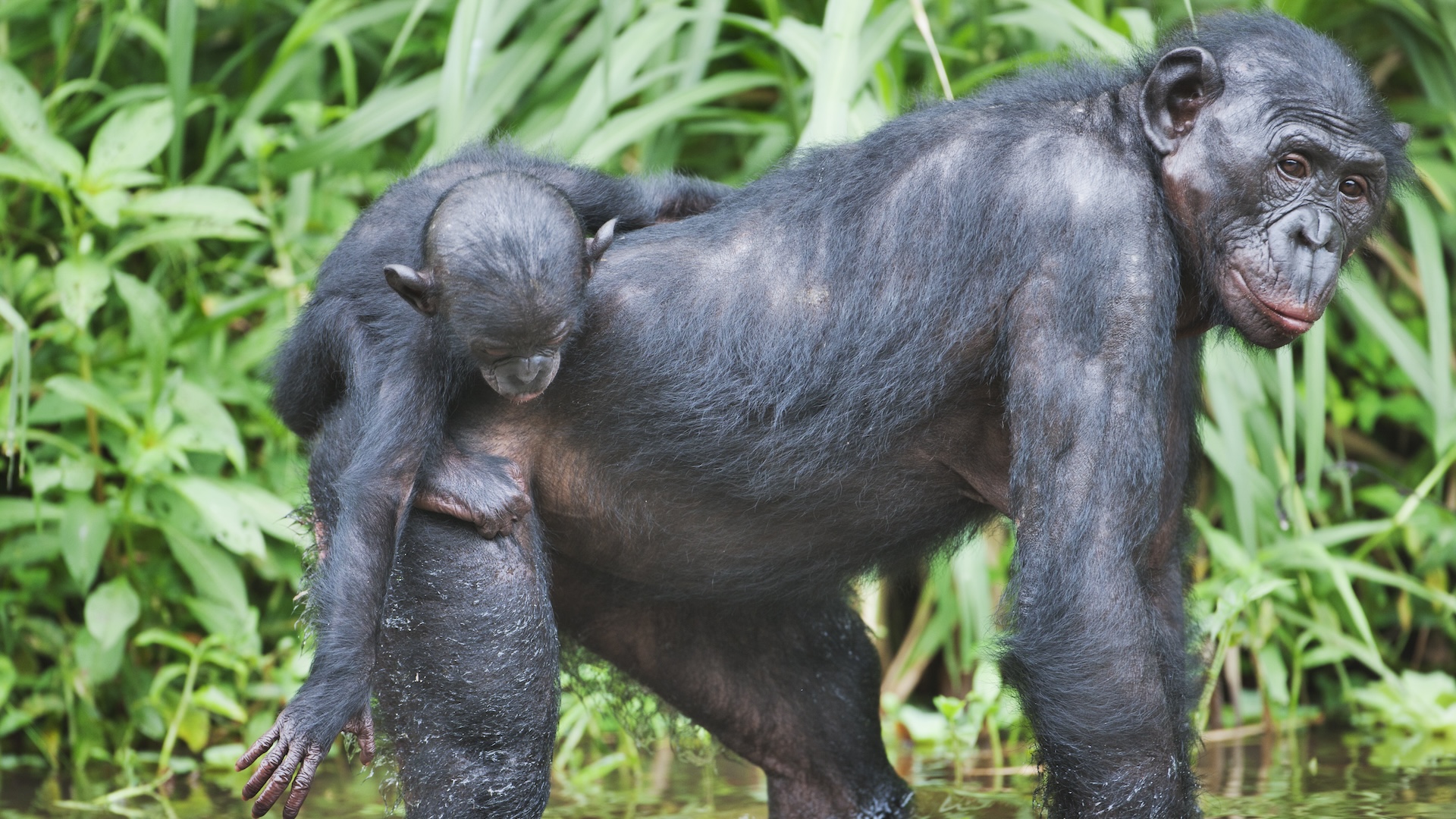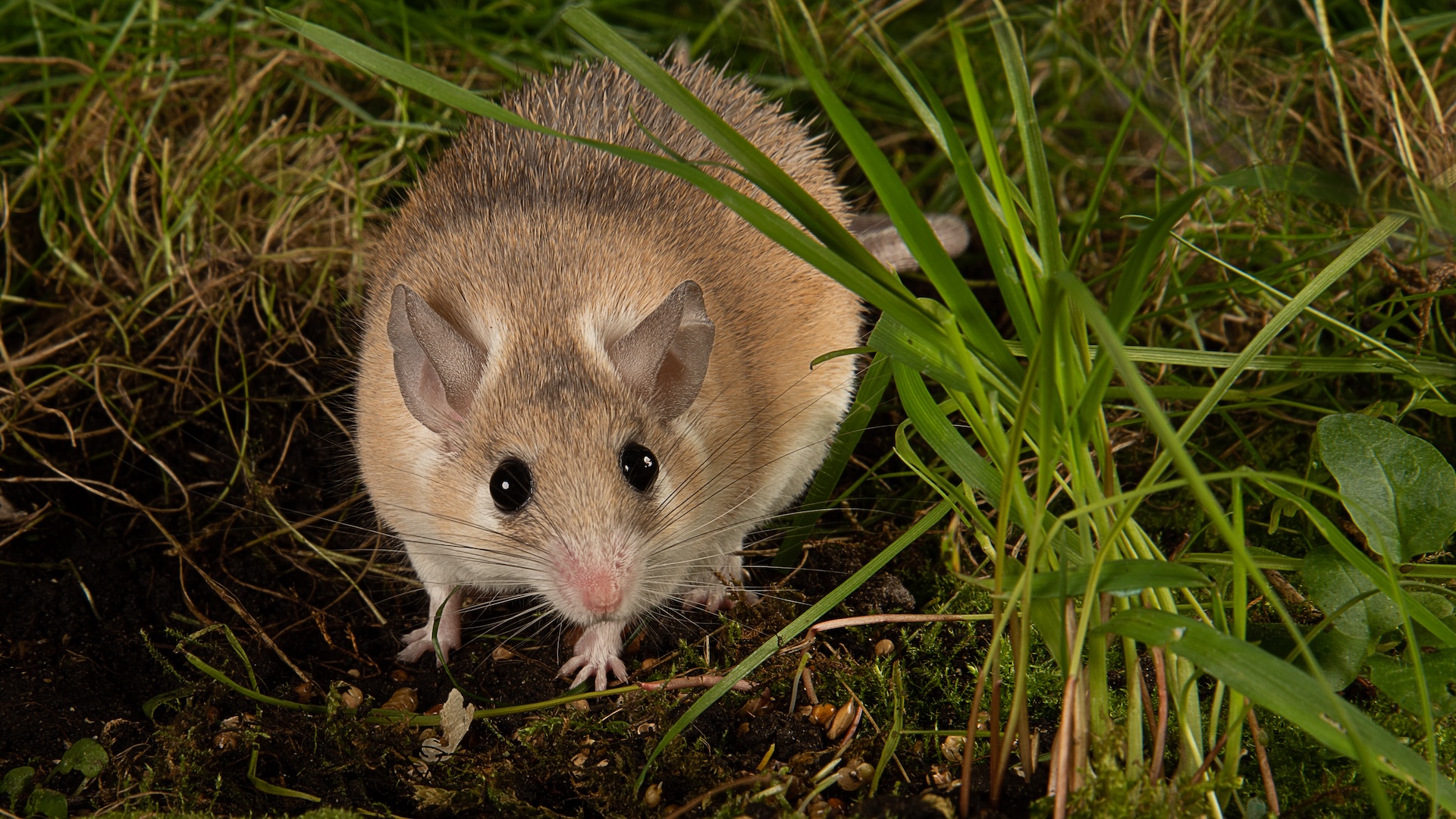
The menstrual cycle plays an essential role in human reproduction. However, most other animals don't experience menstruation.
So, which other species have periods, and what's the evolutionary point of bleeding periodically?
According to Deena Emera, an evolutionary biologist at the Buck Institute for Research on Aging, scientists know of around 15 mammal species that have a menstrual cycle. Most of these are primates, including our closest living relatives chimpanzees (Pan troglodytes) and bonobos (Pan paniscus). Scientists have also discovered menstrual cycles in a few species of bats, elephant shrews and most recently spiny mice (Acomys cahirinus).
Because these animals aren't all closely related, the trait likely evolved convergently, meaning there must be some evolutionary benefit to it, Emera told Live Science.
Related: Are you genetically more similar to your mom or your dad?
Beyond these creatures, there are other animals that periodically bleed through their reproductive organs. Owners of unspayed dogs may know the unfortunate experience of finding blood on their favorite couch and realizing their pet has gone into heat, also called estrus. However, the bleeding that dogs experience comes from a different source than in menstruating animals.
In animals that bleed while in estrus, an increase in the hormone estrogen while the animal is fertile causes the blood vessels inside the vagina to dilate. This results in small amounts of blood leaking out of the vessels and getting expelled.
In menstruating animals, periods happen because of estrogen and a second hormone called progesterone. Additional hormones are also involved in maturing and releasing an egg in the lead-up to menstruation.
Progesterone is a hormone needed to maintain a pregnancy, and in menstruating animals, it starts to increase before the animal is pregnant. And before that increase happens, a rise in estrogen causes the uterine lining to thicken and new blood vessels to develop. Then, once an egg is released, progesterone starts to rise as estrogen falls.
If pregnancy doesn't then occur, the female's progesterone levels drop, and the newly formed blood vessels and other new tissues slough off in the form of period blood and bits of tissue. In non-menstruating mammals, progesterone levels begin to increase only after the female becomes pregnant, Emera said.
To Emera, this difference is intriguing from an evolutionary perspective. "The question isn't really, 'Why do we menstruate?'" Emera said. "The question is, 'Why do we prepare our uterus for pregnancy before we're even pregnant?'"

Nobody is quite sure what the answer is. But according to Emera, it could have to do with the fact that menstruating animals all give birth to small litters. Humans, primates, bats and elephant shrews usually have just one offspring at a time, while spiny mice have just one to four pups — far fewer than most mouse species.
Related: 10 of the strangest pregnancies in the world
Menstruating animals also have longer pregnancies, or "gestation periods" than their non-menstruating counterparts. Spiny mice, for example, have a gestation period of nearly double that of other mice. Because these animals devote so much time and energy to so few offspring, it's important that their offspring survive.
Researchers have found that, when the uterine lining is transformed for pregnancy, it can detect chemical cues released by the embryo that raise or lower its chances of successfully implanting. These chemical signals reflect aspects of an embryo's viability. This quality-assurance step happens in all mammals, but in menstruating animals that pre-build their lining, it happens much earlier.
"When you have a situation where a female is investing a lot, you totally expect systems to evolve to screen as early as possible against those offspring that aren't going to make it," Emera explained.
Robert Martin, a retired evolutionary biologist and academic guest at the University of Zurich, thinks menstruation may also play a role in sperm storage. Bats, for example, can store sperm in their reproductive tract for up to 200 days before fertilization, and humans have been documented to store sperm for up to nine days in the female reproductive tract.
When sperm stick around for too long, however, they start to degrade, which could cause chromosomal issues should they fertilize an egg, Martin told Live Science. He hypothesizes that the shedding of the uterine lining enables animals to shed this old sperm and make space for newer, more-robust sperm.
There are other theories as to why menstruation happens, but there is no concrete proof for one theory over the others. Martin said that more research needs to be done on menstruation, both in humans and other animals.
"There's been very little research, but there are so many practical applications," he said.







